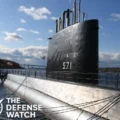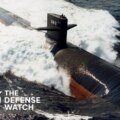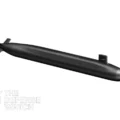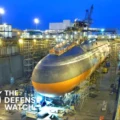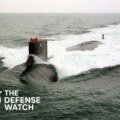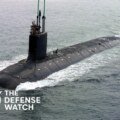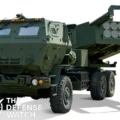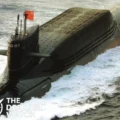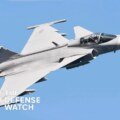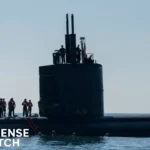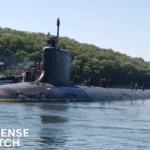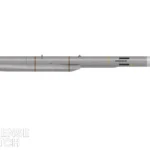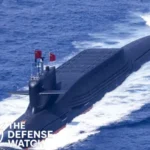- Home
- Catalog
- Submarines
- USS Florida (SSGN-728) Submarine
USS Florida (SSGN-728) Submarine
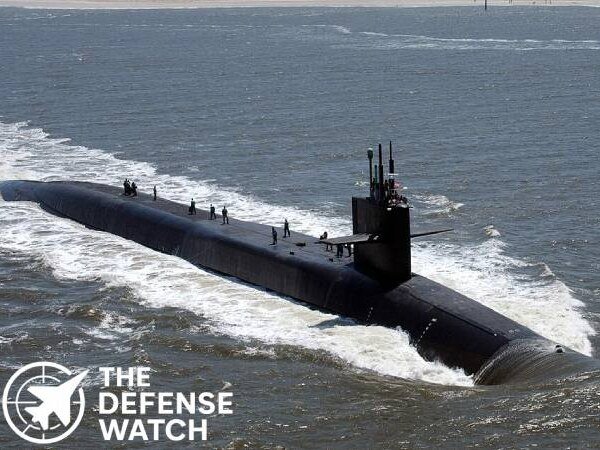
Full Specifications
1. General Information
| Name / Class | USS Florida (SSGN-728) / Ohio-Class (Converted) |
| Country of Origin | United States |
| Type | Nuclear-Powered Guided-Missile Submarine |
| Manufacturer | General Dynamics Electric Boat |
| Operators | U.S. Navy |
| In Service | 1983 (SSBN), 2006 (SSGN) |
| Status | Active |
2. Dimensions & Design
| Length | 170.7 m (560 ft) |
| Beam (Width) | 12.8 m (42 ft) |
| Draught / Draft | 11 m (36 ft) |
| Displacement (Surfaced) | 16,764 tons |
| Displacement (Submerged) | 18,750 tons |
| Hull Material | HY-80 Steel |
| Crew | ~155 (15 officers, 140 enlisted) |
3. Propulsion & Performance
| Power Source | Nuclear |
| Engine / Reactor Type | GE S8G PWR Reactor |
| Propulsion System | Single shaft, pump-jet propulsor |
| Speed (Surfaced) | 20+ knots |
| Speed (Submerged) | 25+ knots |
| Range | Unlimited (nuclear) |
| Endurance | 70–90 days submerged |
| Operational Depth | 240 m |
| Test Depth | 300 m |
| Maximum Depth | 490 m |
4. Armament
| Torpedo Tubes | 4 × 533 mm |
| Torpedoes / Missiles | Mk 48 ADCAP, Tomahawk TLAMs |
| Cruise / Ballistic Missiles | 154 × Tomahawk TLAMs |
| Mines | Capable |
| Decoys / Countermeasures | Mk 2 Mobile Decoy, AN/WLR-10 ESM |
5. Sensors & Electronics
| Sonar System | AN/BQQ-10(V4) suite |
| Radar | Surface search radar |
| Combat Management System | AN/BYG-1 |
| Electronic Warfare System | AN/WLR-10 ESM |
| Communication Systems | VLF, UHF, SATCOM |
| Navigation Systems | Inertial and GPS |
6. Stealth & Defense
| Anechoic Coating | Yes |
| Noise Reduction Features | Pump-jet propulsion |
| Magnetic Signature Reduction | Built-in |
| Acoustic Signature Level | Extremely low |
7. Payload & Capacity
| Weapons Payload | 154 TLAMs |
| Special Forces Accommodation | Up to 66 SOF |
| UUV / Drone Capability | Yes (Advanced payload modules) |
8. Notable Technologies
| Reactor / AIP Type | GE S8G nuclear reactor |
| Automation Level | Moderate |
| Special Features | Lockout chambers, dry deck shelters |
9. Operational History
| Major Deployments | Mediterranean, Middle East, Indo-Pacific |
| Combat / Exercises | Libya (2011) |
| Upgrades | Fire control, communications, sonar improvements |
10. Cost & Production
| Unit Cost | Approx. $1 billion (conversion) |
| Number Built | 1 (Florida; 4 SSGNs total) |
| Production Period | 1979–1997 (conversion 2000–2007) |
11. Media & Credits
| Reference Credit | Creative Commons |
PROS
- Massive Tomahawk missile payload (154 missiles)
- Nuclear propulsion ensures global reach
- Supports special operations and UUV missions
- Advanced sonar and stealth technologies
- Proven operational record in combat
CONS
- High maintenance and operational costs
- Limited production (only four converted)
- Aging hull structure from 1980s design
- Cannot deploy ballistic missiles
- Requires extensive crew training and logistics support
USS Florida (SSGN-728): America’s Undersea Arsenal
Commissioned in 1983 and later converted from a ballistic missile submarine to a guided-missile platform, the USS Florida (SSGN-728) represents the evolution of American undersea warfare. Built by General Dynamics Electric Boat, the Ohio-class submarine was originally designed for strategic nuclear deterrence but was refitted in the early 2000s to carry Tomahawk cruise missiles and support special operations forces—transforming it into a stealthy, multi-mission strike platform.
From Deterrence to Precision Strike
Following the end of the Cold War, the U.S. Navy converted four Ohio-class SSBNs, including the USS Florida, into SSGNs (Ship, Submersible, Guided Missile, Nuclear) variants. The transformation replaced 24 Trident missile tubes with launch canisters capable of carrying up to 154 Tomahawk Land Attack Missiles (TLAMs)—one of the largest payloads of any submarine worldwide. Additional space was configured to host SEAL delivery vehicles and special operations personnel, enabling covert infiltration and reconnaissance missions.
Advanced Capabilities
USS Florida is powered by a GE S8G nuclear reactor, providing virtually unlimited endurance and the ability to remain submerged for months. Its advanced sonar systems, AN/BQQ-10(V4) suite, and low acoustic signature make it one of the quietest submarines in operation. The submarine’s operational history includes significant combat deployments, notably in Operation Odyssey Dawn (2011), where it launched over 90 Tomahawk missiles against Libyan targets.
USS Florida (SSGN-728) Submarine Price in United State
The USS Florida (SSGN-728) is not commercially available; however, the estimated unit conversion cost exceeded $1 billion, reflecting its immense strategic and technological value to the U.S. Navy.
Reviews
Disclaimer Note
The information provided on TheDefenseWatch.com is for general informational purposes only. While we strive to ensure the accuracy, completeness, and timeliness of our content regarding defense and aerospace products, technologies, and specifications, we cannot guarantee that all information is 100% accurate or up-to-date due to the evolving nature of military technology and classified data. TheDefenseWatch.com does not warrant the reliability, suitability, or availability of the information for any specific purpose. Users are advised to consult official sources, such as manufacturers, government publications, or defense agencies, for precise and verified data before making decisions based on our content. We are not affiliated with any defense manufacturers, governments, or military organizations mentioned. Opinions, reviews, and ratings reflect expert analysis but are subjective and should not be considered endorsements. TheDefenseWatch.com is not responsible for any errors, omissions, or consequences arising from the use of this website’s content. External links are provided for convenience and do not imply endorsement. TheDefenseWatch.com reserves the right to update or modify content without prior notice. By using this website, you agree to our Privacy & Cookies Policy.

